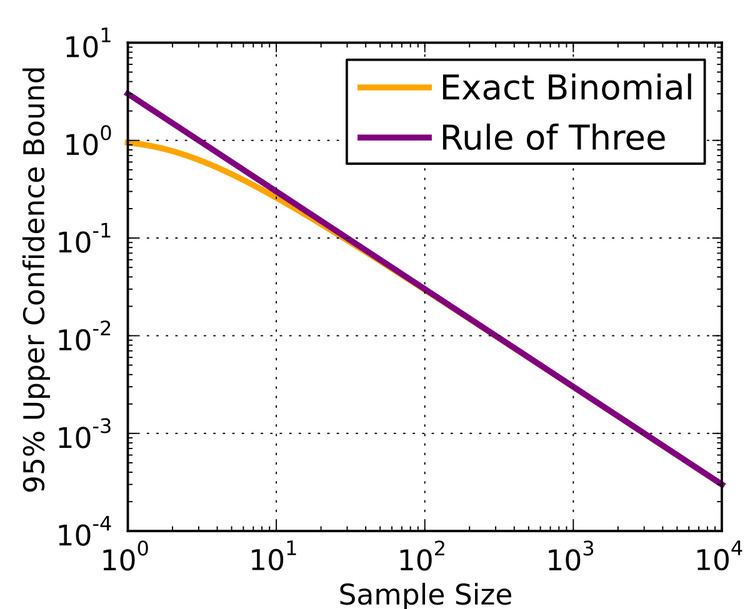 | ||
In statistical analysis, the rule of three states that if a certain event did not occur in a sample with n subjects (
The rule is useful in the interpretation of clinical trials generally, particularly in phase II and phase III where often there are limitations in duration or statistical power. The rule of three applies well beyond medical research, to any trial done n times. If 300 parachutes are randomly tested and all open successfully, then it is concluded with 95% confidence that fewer than 1 in 100 parachutes with the same characteristics (3/300) will fail.
Outline of derivation
A 95% confidence interval is sought for the probability p of an event occurring for any randomly selected single individual in a population, given that it has not been observed to occur in n Bernoulli trials. Denoting the number of events by X, we therefore wish to find the values of the parameter p of a binomial distribution that give Pr(X = 0) ≥ 0.05. The rule can then be derived either from the Poisson approximation to the binomial distribution, or from the formula (1−p)n for the probability of zero events in the binomial distribution by taking logarithms and keeping only the first term of a series expansion of the natural logarithm. In either case, the factor of three arises from −ln(0.05) = ln(20) = 2.9957 ≈ 3.
